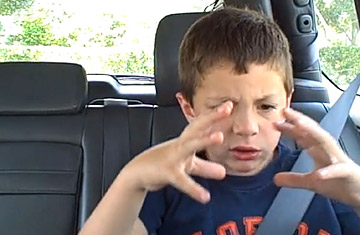
David After Dentist
(5 of 8)
Broadly speaking, the channels are places where a bunch of videos can be grouped together onto one page by an individual user. They've always been there, but they used to be anemic things that most users ignored. "Users on YouTube really understand one noun, what we call a core object, and that's the video," says Noam Lovinsky, a group product manager at YouTube. "They don't really understand the concept of channels." YouTube is going to teach them. Where there used to be two units of organization on YouTube--a single video and the 1 billion video collection--now there's something in between. "The point is to bring channels first and foremost into the site," Lovinsky says, "and to create an experience where I as a user can tell YouTube, Hey, these are the things that I care about, this is where my affinity lies, this is the thing I like to be connected to, so I can turn on YouTube and see what's on."
It's a minor change that has major repercussions, not just for you and Your Tube but quite possibly for the entire broadcast industry. It helps solve YouTube's chaos problem, by putting users to work organizing all those videos themselves. But more to the point, there's something else that has channels--oh, that's right, TV! This isn't just a design tweak; this is YouTube attempting to take its place as the next and possibly final stage in what it sees as the lengthy evolution of broadcast media everywhere.
Shishir Mehrotra, YouTube's vice president of product management (after a while, you begin to suspect that everybody at YouTube has the same job with slightly different names), has a good set piece on this subject. It goes like this: in 1988 the No. 1 TV show in the country was The Cosby Show, with an average weekly Nielsen rating of 27.1. (Mehrotra cites the numbers from memory; he gets some of them wrong, it turns out, but his point stands.) Ten years later, in 1998, Seinfeld was No. 1--but it drew only a 21.7 rating. In 2008 the No. 1 show was American Idol, but it averaged just a 15.4 rating. Obviously, No. 1 isn't what it used to be. The audience for TV has become increasingly fragmented.
But cable TV can fragment only so far. You can have a cable channel that's dedicated solely to sports, but you can't have one that's dedicated just to, say, sailing, because the economics don't work. You can't run a cable channel if only 30 people watch it.
But you can run a YouTube channel. YouTube can fragment infinitely, and Mehrotra thinks it will. YouTube is planning on playing the long game. "If our journey is a baseball game, we're not even in the first inning," he says. "We're, like, in warm-ups. You can't even watch YouTube on your television yet. All the channel owners are still producing for antiquated, gate-kept ecosystems. All that's going to change." If YouTube can't beat TV, it's going to quietly, subtly join it--and then it's going to beat the living crap out of it. "About 75% of our time is spent watching brands that didn't exist in 1980," says Salar Kamangar, YouTube's CEO. "We think of ourselves as the platform for the next generation of channels."
